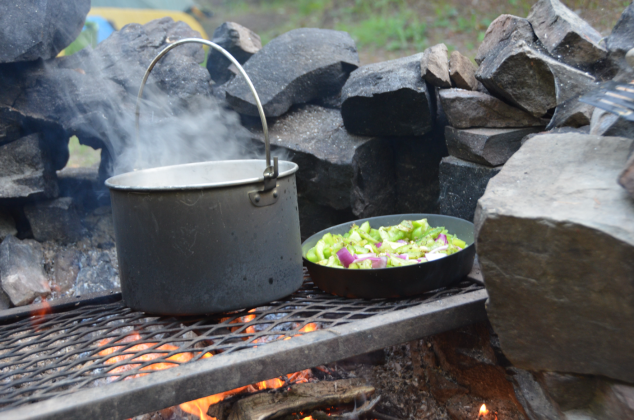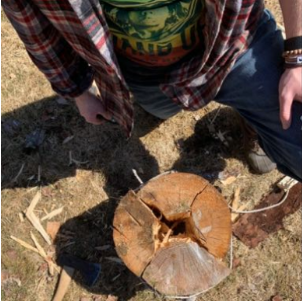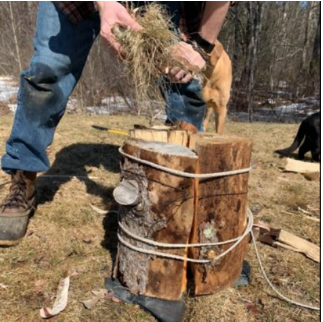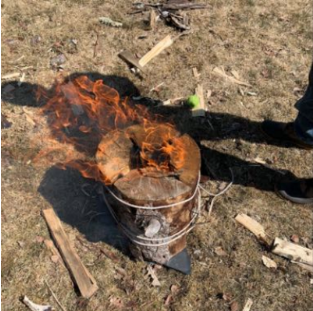Cooking on a Campfire
Cooking on a campfire is both fun and tasty! And there are multiple ways to go about it.
Many established campsites have fire rings or fire pits. If you are planning to build a fire for cooking, it is best to use an already-established fire pit. Visit the Minimal Impact Recreation in Maine page to learn more about minimizing the impacts of campfires.
Here are a few options for cooking on a campfire, along with some examples of meals and snacks.
Coals
Allow the charcoal to reach high heat (white hot) so that the food is easy to cook and clean.
Use natural wood or lump charcoal, and avoid cooking with contaminated fuels.
Use foil wraps to widen your options!
- Potatoes (baked)
- Campfire Banana Boats
- Roasted Vegetables
Flame
Make sure to use the right firewood! Dry, seasoned wood is best (be sure to check if the location where you are cooking has any specific firewood regulations)
Use proper gear! Ensure that the gear you are using is metal or specifically suited for the outdoors.
Avoid foods that create fat or oils as they cook such as bacon, as dangerous flare-ups can occur.
Utilize a grate or skewers to open up more opportunities for cooking things such as:
- Hotdogs
- Sausages
- Marshmallows
- Corn
- Baked Beans
- Soup (just add water!)
- Pasta
- Super Mac & Cheese with add-ins (add protein)
- Hamburgers
- Grilled Chicken
- Chili


Swedish Torch Method
This method is great for a windy day, and they burn efficiently at a high temperature.
Materials Required:
- Large Cut Log (ideally from a softwood tree)
- Kindling
- Wire or Rope
- Splitting Maul/Hatchet
- Dry Grass and/or Birch Bark
- Match and/or Lighter
Steps:
- Cut log into four pieces of roughly equal size
- Place pieces back together and carve out the middle of the split pieces that is big enough to fit your hand into (Tip: carved out pieces can act as kindling!)
- Tie the four pieces of log back together using the wire/rope
- Place some dry grass and birch bark in the bottom of the log
- Optional Step: Place log on stones/rocks to help with air flow
- Light the birch bark and slowly add some of the kindling
- Allow the fire to heat up and you’re ready to cook!


Backcountry Stoves
MSR Whisperlite:
- Pros: uses whitegas (good for using in cold temperatures), lightweight and efficient, can bring lots of gas bottles with you, quiet
- Cons: hard to simmer and use for low-heat cooking
- Stove Use
- More Info
MSR Dragonfly:
- Pros: very good at simmering and flame control, uses whitegas (good for using in cold temperatures), good for cooking for larger groups
- Cons: heavy, loud, less compact than other stoves
- Stove Use
- More Info
MSR Windburner:
